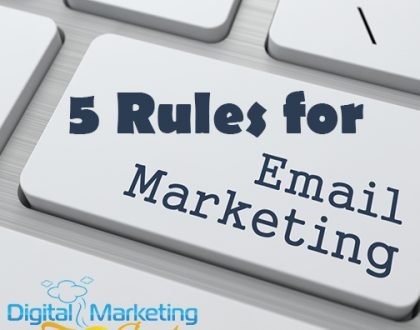
Rules For Email Marketing
Since 2003, CAN-SPAM legislation has been in effect in the United States. Canada recently passed legislation called the Canada Anti-Spam Legislation. Both are based on marketing best practices. Canada’s new law requires payment of a hefty fine, if the sender of an email doesn’t have permission to hit send. Like CAN-SPAM, Canada’s new law says that email headers and subject lines have to be about the subject matter and not misleading, as well as properly identifying the sender.
Here are some actual rules for email marketing, not just tips and tricks, but policies that you need to follow, to avoid being perceived or get in trouble for spamming.
- If you are going to send an email to someone, you have to have their permission. Many CRM’s include that question when you upload new contacts to your list. Do you have permission to email this contact? Some even require that you specifically explain how you obtained permission from the contact for you to send them emails. That’s because it is a big deal. For many reasons, like not being known as a spammer. But Google will catch spammy behavior automatically now, so you will be penalized, if you get a lot of people marking you as spam when you send out an email.
- This second rule should be a no-brainer, but I have seen some funny things come through my inbox, or spam folder, should I say. The email address that you are sending your email campaigns from should be relevant and professional. When at all possible, you should email from an address including the domain name of your website. For example, mine come from jean@digitalmarketinggenie.com. Obviously using an irrelevant or juvenile email address will only tarnish your image and trust will current and potential customers
- Your email sending platform should have a professional look to their outgoing emails. There are free providers, such as MailChimp, who offer paid upgrades. MailChimp actually does well will tracking unsubscribers and hard and soft bounces. Other providers like Constant Contact have a very professional looking template for sending emails from. Then CRM’s like Infusionsoft offer complete control over the look and feel of all of your outgoing emails. Everything is completely customizable and they have excellent tracking tools to help with bounce rates. It’s all about your needs and what fits your budget when it comes to which email sending platform you use.
- No one just gets a great email list of 5000 or 15,000 overnight. For a quality list of contacts who want to get emails from you, it takes time and trust. That’s why it’s important not to buy or sell your list, once you build it up. The people on your list signed up because they wanted to hear from YOU, not a person who buys your list. And vice versa, you don’t want to start sending emails about your service or product to a bunch of contacts who signed up to hear from someone else. It’s misleading and it can lead to unhappy people and potentially being marked as spam.
- And finally, a last rule you need to follow for email marketing. Let them out! If a subscriber or contact on your list wants to unsubscribe, make it easy for them. You only want people who want to hear from you anyways. On the bottom of your emails you should have a link to unsubscribe. Most email platforms include this in standard.
This article initially appeared on digitalmarketinggenie
.png)

